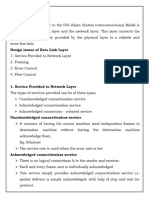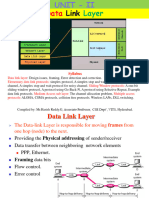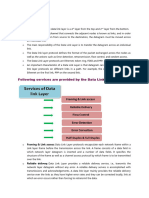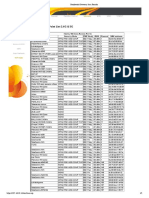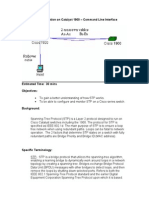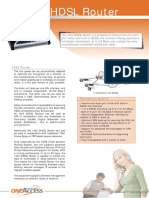0% found this document useful (0 votes)
170 views62 pagesUnit-2 Data Link Layer L1-3
The document summarizes key aspects of the data link layer, including:
1) The data link layer provides three services to the network layer: unacknowledged connectionless, acknowledged connectionless, and acknowledged connection-oriented.
2) Design issues at the data link layer include framing, error detection/correction using techniques like parity checks and CRC, and flow control using sliding window protocols.
3) Framing involves grouping bits into frames using methods like character counting, character stuffing, and bit stuffing.
4) Error detection techniques include parity checks and CRC, while error correction uses Hamming codes to detect and correct single bit errors.
Uploaded by
harshCopyright
© © All Rights Reserved
We take content rights seriously. If you suspect this is your content, claim it here.
Available Formats
Download as PDF, TXT or read online on Scribd
0% found this document useful (0 votes)
170 views62 pagesUnit-2 Data Link Layer L1-3
The document summarizes key aspects of the data link layer, including:
1) The data link layer provides three services to the network layer: unacknowledged connectionless, acknowledged connectionless, and acknowledged connection-oriented.
2) Design issues at the data link layer include framing, error detection/correction using techniques like parity checks and CRC, and flow control using sliding window protocols.
3) Framing involves grouping bits into frames using methods like character counting, character stuffing, and bit stuffing.
4) Error detection techniques include parity checks and CRC, while error correction uses Hamming codes to detect and correct single bit errors.
Uploaded by
harshCopyright
© © All Rights Reserved
We take content rights seriously. If you suspect this is your content, claim it here.
Available Formats
Download as PDF, TXT or read online on Scribd
/ 62




